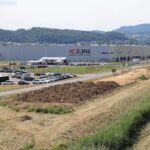May the 28th, 2025 – Croatian purchasing power has been on the up for some time now, and it’s now been confirmed to have grown the most in the entire EU.
As Sinisa Malus/Poslovni Dnevnik writes, inflation might cloud things, but according to statistics, Croatian purchasing power has skyrocketed in the past year or so. In terms of growth, Croatian purchasing power has risen the highest in the entire EU. Real median income in 2024 grew by as much as 21.1 percent to 16,277 euros per year. Last year, Croatia overtook Lithuania, and now eight EU Member States have a lower real median income than Croatia.
“Given the expected growth of gross wages in 2025 of 8.5 percent, we expect to overtake Estonia and probably the Czech Republic this year. Croatia was also a record holder in employment growth last year with a rate of 6.5 percent. That will continue in 2025, during which we expect an additional growth of around three percent.
This employment growth is a massive six times faster than the CEE average, which is projected at barely 0.5 percent. We’ve also been witnessing strong growth in non-purpose consumer lending at a level of 15 percent per year. Croatia also recorded that same sum back during the second half of last year,” they stated from the Croatian Employers’ Association (HUP).
Croatian purchasing power is catching up to eu standards – finally

Retail trade recorded slower real growth of 3.5 percent per year in the first quarter of this year, marking a noticeable slowdown after consumption growth of 6.6 percent in the fourth quarter of 2024. This isn’t unexpected, as the result has been strongly influenced by last year’s high base, winter consumption boycotts and Easter having fallen later this year.
Looking at things in this context, real growth in personal consumption in Croatia has become stronger than in the rest of the CEE region (around 1.5 percent). That isn’t particularly surprising given the relatively significantly faster real growth in gross wages and employment compared to surrounding countries, according to the Focus of the Week of the Croatian Employers’ Association (HUP).
Given the slower growth in personal consumption and construction and the slightly lower contribution of net exports, this year’s first data point to a slowdown in real GDP growth in the first quarter of 2025 to a level of around three percent after the 3.8 percent growth recorded last year.
“Looking ahead to the rest of this year, Croatia can expect slower real growth in personal consumption. It will be at around 4.1 percent after 5.8 percent was recorded in 2024. That’s on the wings of strong gross wage growth of around 8.5 percent (around five percent in real terms), and supported by wage growth in the wider public sector of up to 10 percent. Those factors place further pressures on additional employee income growth, the relatively high indexation of pensions for prices and wages last year, and an increase in benefits issued from the budget (+7.4 percent/777 million euros).
We expect continued solid growth in consumer lending in line with the strong pace of wage growth and consumer optimism. That has been consistently above the EU average since 2019. A stronger summer tourist season is the main upside risk to consumption, given the positive announcements of leading tourism operators and improved confidence in the EU services sector,” HUP writes.
public spending is on the up

Strong growth in public spending, a robust labour market, and EU funds are prolonging the relatively strong growth in personal spending and the economy in general this year. That being said, the current pace of growth is unsustainable. The strong growth in public spending in the (currently ending) election cycle was ‘invested’ in increasing Croatian purchasing power of the population. Such things are difficult to repeat. This is primarily because if this surge in public spending were to continue, Croatia would enter an excessive deficit procedure. That would see it exhaust its fiscal capacity, and halt the process of improving its credit rating.
The key temporary driver of aggregate demand is also passing by the withdrawal of the ‘investment tide’ supported by record inflows from EU funds. Croatia has withdrawn 3.7 billion euros or 64 percent of the total grant envelope of 5.8 billion euros. This is occurring amid tariff wars with lasting consequences for the cost of international trade. In addition, the strong growth in Croatian unit labour costs (44.7 percent) compared to the EU average (20.9 percent) in the last five years is fuelling inflation. Together with the hardly competitive price of electricity and tax issues, there’s a negative effect on many Croatian companies.
This only updates HUP’s key thesis that excessive regulation and intervention in the principles of the free market have an adverse effect on the sustainability of companies in the trade sector. There are also negative points faced by the dynamics of retail trade and competition among retailers to the detriment of end consumers. This has been the case for some time now with the ban on Sunday work, given that the decision is selective and discriminates against retailers themselves according to the exemption on the prescribed limit and size.
Although most EU Member States restrict the work of retailers on Sundays in some way or another, it would benefit Croatia to properly take the high exposure of its economy to tourism in the EU into account. Tourism is (in)directly responsible for almost 50 percent of personal consumption throughout the entire year.











